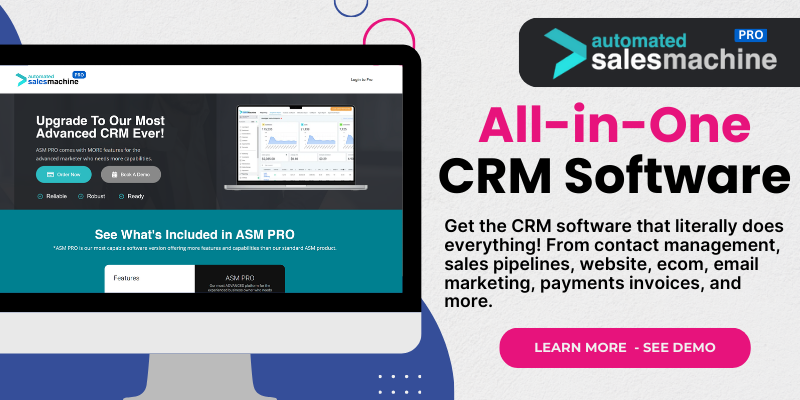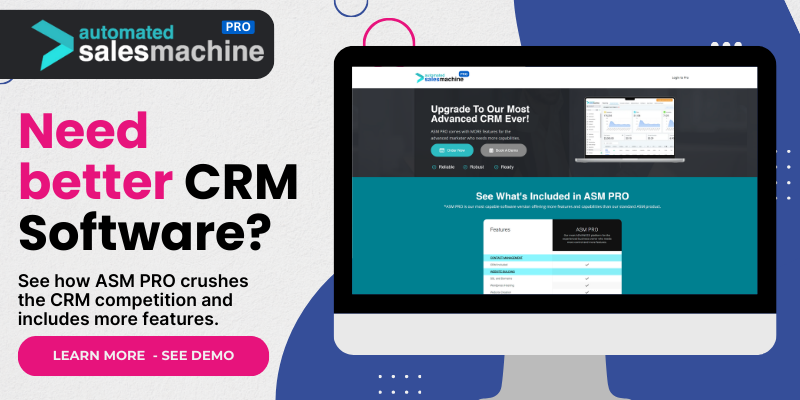Understanding CRM Software Integration
What is CRM Software?
Alright, so let’s kick this off by talking about CRM software. Customer Relationship Management (CRM) software helps businesses manage their interactions with current and potential customers. It’s like having your own virtual assistant that keeps track of everything for you. You can manage contacts, sales leads, and even customer service interactions in one central platform—it’s pretty nifty!
In my experience, the right CRM software can significantly streamline your workflow and enhance your communication with clients. Imagine having all your client conversations, emails, and sales data neatly organized in one spot. That means no more digging through your inbox or spreadsheet to find vital info. Trust me, it’s a game changer!
Another cool feature of CRM software is the reporting capability. You can analyze your sales performance and identify areas for improvement. The insights you gain are invaluable when it comes to making more informed business decisions. It’s like having a compass guiding you in the right direction!
Benefits of Integrating CRM with Outlook
Seamless Communication
Now, let’s discuss the massive advantage of integrating your CRM with Outlook. By doing this, you create a bridge between your email communications and your customer management tool. This means any emails you send or receive can be auto-captured in the CRM—no more manual entries required!
This seamless communication also allows you to keep track of your correspondences with clients effortlessly. For instance, whenever I send an email from Outlook to a client, I know that it’s already logged in my CRM. This reduces the risk of miscommunication, which can be a huge lifesaver in maintaining client relationships.
Plus, having everything linked drastically saves time. Instead of switching back and forth between your CRM and your email, everything is all in one place. You can update deals, schedule follow-ups, and check client history without the hassle of juggling multiple platforms!
Features to Look For
Ease of Use
If you’re diving into the world of CRM and Outlook integration, one of the first things I suggest is looking for user-friendly software. You don’t want to pick something that’s overly complicated, which can deter you from using it effectively. A smooth user interface makes all the difference.
From my time experimenting with various options, I found that intuitive navigation makes training new team members a breeze. When everyone can get up to speed quickly, your whole operation runs smoother, and everyone is happier!
Lastly, ease of use boosts productivity. When the software isn’t a chore to navigate, you find yourself actually enjoying using it—which is something we can all appreciate, right?
Top CRM Options that Integrate with Outlook
Salesforce
Let’s get into some of the standout CRM options that integrate smoothly with Outlook! First up is Salesforce—a heavy hitter in the CRM world. Known for its robust features, Salesforce offers a direct integration with Outlook, enabling you to link your emails, contacts, and calendars directly within the CRM.
I’ve found Salesforce to be incredibly powerful for tracking leads and analyzing data, all while keeping your emails organized. This level of detail can ramp up your sales process and really help you understand your client’s needs.
However, just a heads-up: it can be a bit pricey and might take some time to master, but the investment is often worth it for serious businesses.
HubSpot CRM
Next on the list is HubSpot CRM. I absolutely love HubSpot for its free tier, which is fantastic for businesses just starting out. Its integration with Outlook is also seamless, allowing you to sync your emails and contacts easily.
What I appreciate most about HubSpot is the emphasis on inbound marketing. It’s not just about tracking sales, but also about nurturing your leads with valuable content. This CRM helps you maintain genuine relationships with your clients by offering targeted interactions.
Plus, its automated follow-up feature ensures that no lead slips through the cracks, which is especially handy for busy professionals like us!
Zoho CRM
Another fantastic option to consider is Zoho CRM. I love how customizable it is! You can tailor it to reflect your business processes, which is a huge plus. Zoho integrates well with Outlook too, allowing you to manage your emails effectively within the platform.
The analytics feature in Zoho is impressive and provides you with insights that can guide your marketing strategies. You can also segment your contacts quickly, which makes targeted outreach a lot easier.
All in all, if you’re looking for a flexible CRM that adjusts to your needs, Zoho could be a great fit!
Tips for Effective Use
Consistency is Key
Using a CRM effectively isn’t just about setting it up; it requires consistent usage. I’ve seen firsthand how critical it is to make it a part of your daily routines. Whether it’s logging emails or updating client information, staying on top of these tasks transforms how efficiently you work.
One tip I have for ensuring consistency is to set reminders for tasks or integrate CRM updates into your calendar. This ensures you don’t overlook these small but vital activities that contribute to your overall success.
Additionally, encourage your team to do the same. The more everyone is on board with using the CRM, the more reliable your data becomes, making it easier for the whole team to make decisions based on accurate information.
Continuous Learning
As with any tool, the world of CRM is always evolving. It’s essential to stay on top of new features and updates. I can’t tell you how many times I’ve discovered a new functionality in my CRM that made my life easier just by attending webinars or reading up on updates.
Certain CRMs like Salesforce offer fantastic resources and communities for learning best practices. Investing time in these can really help you maximize the tools available.
Don’t hesitate to reach out to your CRM’s customer service or community forums, either. Other users usually have fantastic tips and tricks. It’s all about finding what works best for you!
Feedback and Adaptation
Lastly, always gather feedback from your team and be willing to adapt your methods. Things change, and what worked yesterday may not work today. I recommend having regular check-ins to discuss what’s working and what’s not.
Encourage team members to share their experiences and suggestions. This collaborative approach can highlight new opportunities for improving efficiency across the board!
Remember that a successful CRM experience doesn’t just happen overnight; it takes time, patience, and a willingness to adjust as necessary.
Conclusion
Integrating CRM software with Outlook can unlock a world of efficiency and improved client relationships for any business. Each software option has its unique strengths and features, and the right one depends on what best fits your needs. Don’t rush the decision—take your time exploring these options!
Once you’ve found your ideal CRM, focus on consistency and continuous learning to make the most out of it. You’ll not only become more organized but also enhance your interactions with clients, ultimately leading to higher satisfaction and business growth. Happy CRM hunting!
FAQ
1. What is the main purpose of CRM software?
The main purpose of CRM software is to manage interactions with customers and potential customers efficiently. It helps businesses streamline processes, improve customer relationships, and ultimately drive sales growth.
2. How does integrating CRM with Outlook improve workflow?
Integrating CRM with Outlook allows for seamless communication by syncing emails and calendar events. This reduces the need to switch between platforms, helping users manage client relationships more effectively and save time.
3. What features should I look for in CRM software?
Look for user-friendliness, integration capabilities, reporting tools, and customization options. These features help ensure that you can use the CRM effectively and tailor it to your business needs.
4. Can I use CRM tools for free?
Yes, many CRM tools like HubSpot offer free versions that provide basic functionalities. These can be a great starting point for small businesses or those new to CRM software.
5. How often should I update my CRM information?
It’s essential to update your CRM information regularly—ideally, as soon as you get new data. Consistent updates ensure that you and your team have access to accurate and up-to-date information for decision-making.

